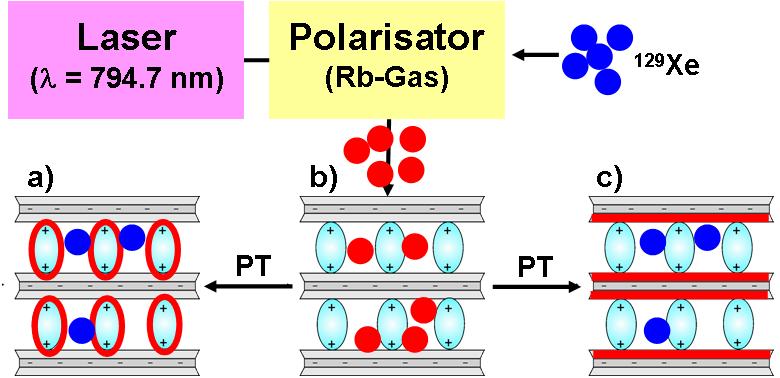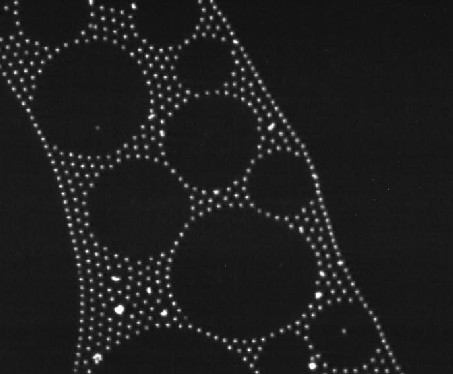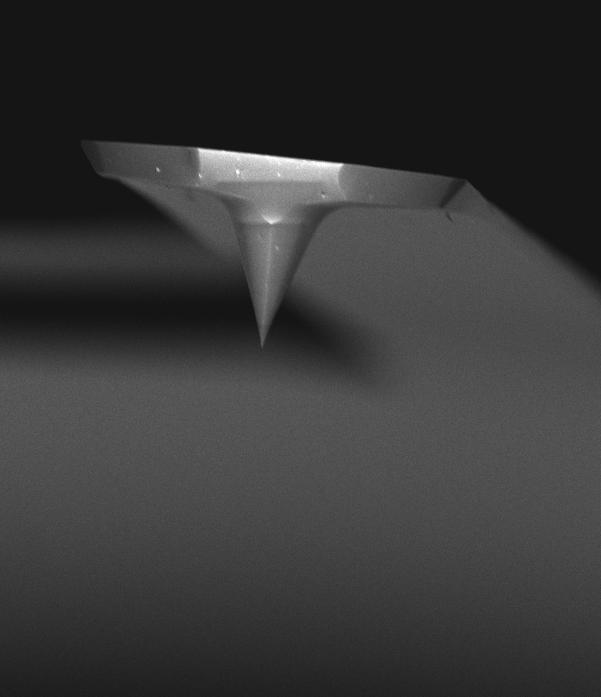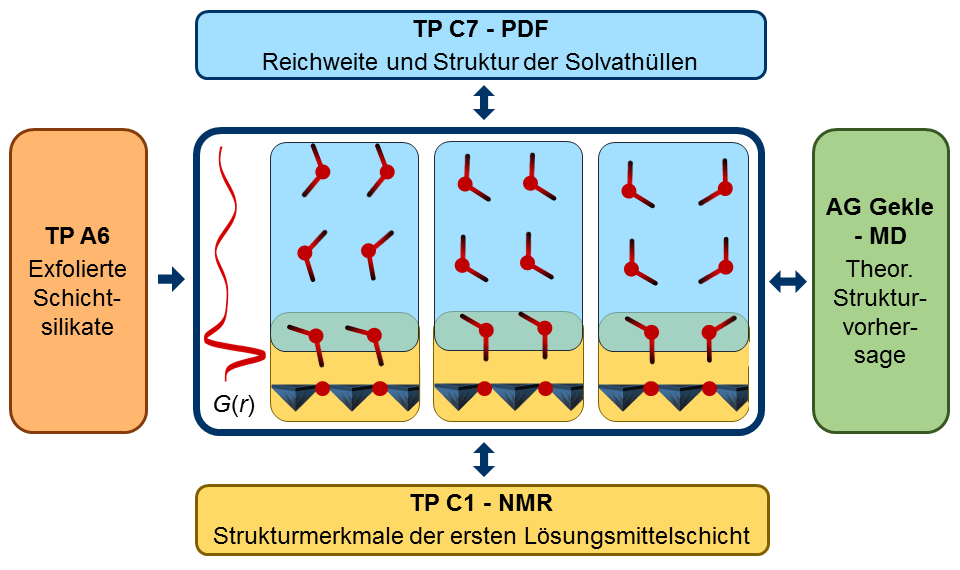Research Projects
C1
|
Surface selective NMR spectroscopy for hybrid materialsContact:Prof. Dr. Ernst Rößler, Prof. Dr. Jürgen Senker Within this project we use hyperpolarisation techniques to develop and apply a surface sensitive and selective NMR spectroscopy. For this, we mainly rely on 129Xe which is hyperpolarised by the application of Spin Exchange Optical Pumping. In addition, Dynamic Nuclear Polarization is employed. Our techniques will allow for a comprehensive characterization of both structural as well as dynamical properties at the surfaces of the hierarchically-built hybrid materials synthesized within the SFB. For the oncoming period the focus will be i.) on developing NMR probes for investigating thin film samples and ii.) on the application of hyperpolarized 129Xe via liquid phases. |
C3
|
Charged Nanoparticles at InterfacesContact: Prof. Dr. Thomas FischerAttractive interactions between electrostatically charged nanoparticles at a water/air or water/oil interface lead to the development of mesostructures. This subproject aims to explain these interface-specific interactions, which to date are still not sufficiently understood. Correlations between the mobility of the nano¬particles, the submergence in the aqueous phase of the nanoparticles, and the interactions between the nanoparticles should reveal correlations that enable the targeted construction of mesostructures from spherical and non-spherical nanoparticles. |
C4
|
Charge Distribution and Interaction Forces at Interfaces: High Resolution Detection and its Application towards the Controlled Formation of Mesoscopic Structures.Contact:In project C4 new probe microcopy methods will be developed for studying the interaction between single building blocks of mesoscopic systems. The inter-particle force and adhesion of nanoparticles are of particular interest for the industrial applications of colloidal suspensions. To measure such interactions, we will develop on the base new instrumental approaches on the base of a combination of atomic force microscopy (AFM) and nanofluidics. With the same setup, also the interaction force in other colloidal systems can be determined quantitatively, for example during the exfoliation of silicate platelets. for the preparation of colloidal probes that are used in direct force measurements with the atomic force microscope (AFM). Electrostatic forces due to local charge distributions are particularly long-ranged. Therefore, those will be studied closely by other probe microscopy techniques. |
C7
|
Local order of solvent molecules at solid-liquid interfaces in colloidal dispersionsContact:In this project, the X-ray pair distribution function (PDF) shall be established and a guideline be developed to detect structural changes in liquids and derive the number and extent of restructured layers of solvent molecules at colloidal interfaces. The understanding of the structure of liquids at colloidal interfaces is of particular importance for different projects of the SFB, amongst others in solid-liquid catalysis or the delamination of layered silicates. The experimental PDF data shall be combined with molecular dynamics simulations, and complemented with results from surface-sensitive NMR spectroscopy. |
